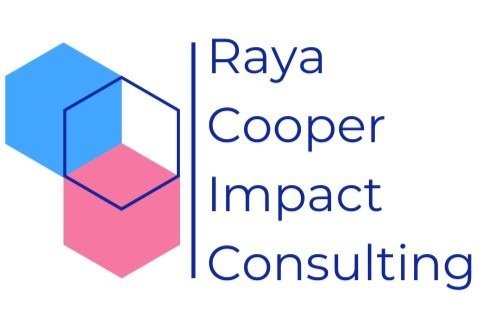Numbers & Stories Part 2: Use 3 types of stories to shape your impact report
This blog is part two of a two-part mini-series on how to make the most of numbers and narrative and how to use them together. RCIC is so excited to have guest-writer, Leyla Farah of Narrative Arc, to share her insights and expertise.
As has been discussed in previous blogs, impact reporting is more than just a book report or a collage of numbers and stories. For Impact Reports to be successful, we must be intentional and attuned to our audience and their needs.In today's savvy and discerning world, readers crave authenticity and meaning, they do not want to be subjected to yet another marketing exercise. So how does narrative help pave the way for a successful impact report?
When we talk about our work, there are three types of stories we tell - our core story, our current story and our future vision story.
FIGS opens their report with their core story
Your organization’s core story anchors your impact to your purpose. It answers the question “why” – why you do the work you do, and why your organization exists. You, your team, and your current supporters should know this story well - but just like any good oral tradition, the magic is in the repetition. Repeat listeners will find the familiarity comforting, while new listeners can use it as an emotional point of entry into your organization’s community. Much like the frameworks discussed in earlier blogs in this series, the core story connects the reader to the mission and purpose of your organization and helps to tell them where the story is headed, and why they should care. But your core story is just the beginning.
Allbirds illustrates their Future Vision story
The next part of your impact report presents an opportunity to spotlight stories that connect your past to your present. Where your core story is tinged with emotion, your current day stories are defined by proof. This is where your impact report should work to put a human face on the data and metrics that show real progress and momentum towards your goals. Consider pairing each data point highlighted in your report with a voice from the population you serve. Allow their stories to deliver the proof of your organization’s successes.
Don’t be afraid to integrate numbers and stories together, and interweave them so that both narrative and numbers appear on a page. Too often, I see reports where “story” is in its own section, which decontextualizes the data and forces the reader to do a lot of work. When you make it easy for the reader to get what you are trying to say, you will keep their attention better.
Finally, your impact report should leave your audience with a story that brings your organization’s vision to life. This story stands alone. It paints a picture of a future world in which your organization’s goals have been achieved. This emotional and inspirational story may be best told through the eyes of a child. This is an opportunity to invite engagement from your supporters, both old and new. Establishing a clear image of your vision – and the path to achieve it – in the minds of your audience sets the next phase of your organization’s impact in motion.
These three types of stories - your core story, your current day stories, and your future vision story - create the structure of your impact report. As you select stories and narrative to include in your report, ask yourself, which type of story is it? What is it telling the reader. Choose your stories wisely, use them to deepen connections with supporters both old and new, and allow them to pave the way to even more impact.
About the authors
Leyla Farah has focused on the intersection of technology, innovation and storytelling for the better part of 20 years. She has a knack for finding human stories in data, and using those stories to help bring ambitious visions of the future to life. Leyla is the founder Narrative Arc, a consulting firm that provides storytelling and narrative strategy support for nonprofit organizations. She is also a Trustee for the University of Oregon Foundation, she sits on the advisory council for the University of Oregon's Honors College, is a guest speaker at New York University, and is an alumna of PlanetOut, SYPartners, Oracle, and Salesforce. She is based in Los Angeles, where she lives with her wife, their young daughter, and a dog named Beau
Morgan Buras-Finlay is founder and principle of Raya Cooper Impact Consulting. She is a seasoned and holistic social impact professional, helping organizations leverage the science of measurement and the art of storytelling to scale meaningful change. She is an active member of the American Evaluation Association, and serves on the Foundation & Nonprofit group and Social Impact Measurement group. She holds a Masters from Columbia University and a Bachelors from Reed College, and is an alumna of Salesforce and Mission Economic Development Agency. She is based in San Francisco, where she lives with her husband, their young daughter and many (maybe too many) house plants.





